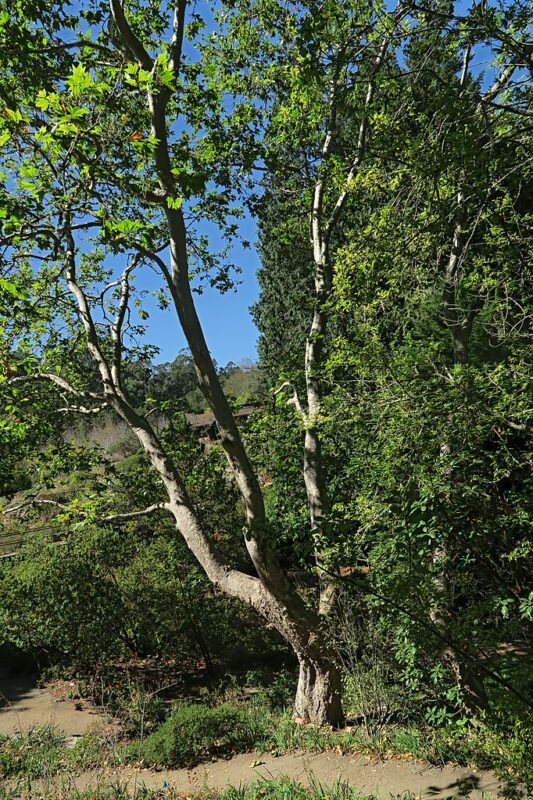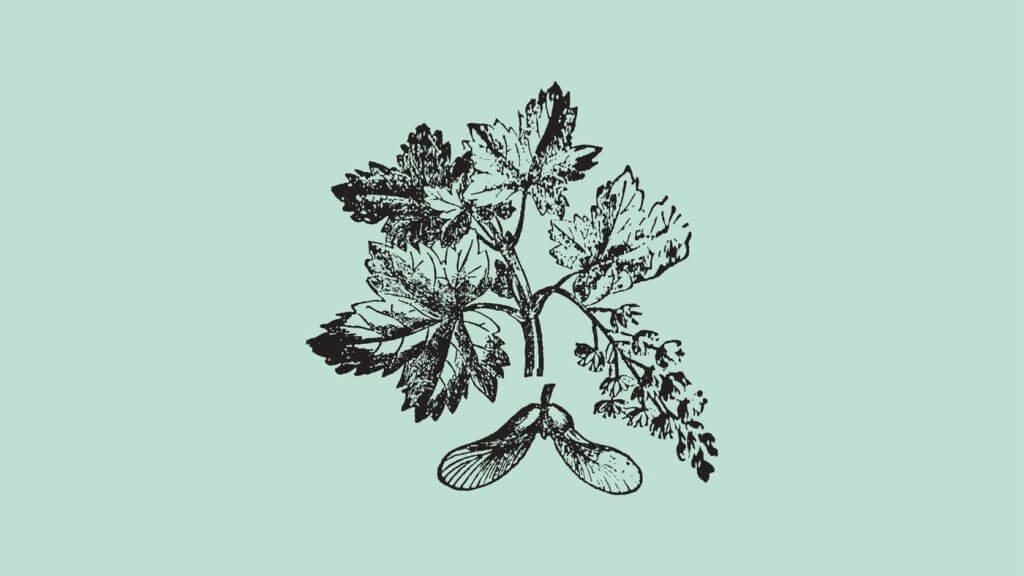Platanus racemosa, known as the California sycamore, is a fast-growing deciduous tree native to California and Baja California. Platanus racemosa is edible but doesn’t have many uses in the kitchen. It is mostly used as an ornamental tree as this sycamore is known to be hearty and deer resistant.
Platanus racemosa is an important part of the ecosystem. They attract pollinators such as butterflies and hummingbirds. They are home to owls, woodpeckers, and red-tailed hawks. The leaves provide food for the larvae of the western tiger swallowtail butterfly.
While California sycamore is not used in cooking, it does have value for the forager.
California Sycamore plant profile
Platanus racemosa belongs to the family Platanaceae. Other common names for this tree include western sycamore, California planetree, and aliso.
What Are You Foraging For Right Now?
We're thrilled to hear your ideas. What would you like to submit today? Feel free to share your thoughts and experiences with us.
There are several varieties of sycamore trees, and some are native to North America, such as the:
- American sycamore, or American planetree (Platanus occidentalis)
- California sycamore, or California planetree (Platanus racemosa)
- Arizona sycamore (Platanus wrightii)
- Mexican sycamore (Platanus mexicana)
Other varieties are native to Europe and parts of Asia like the:
- Old world sycamore, or oriental planetree (Platanus orientalis)
- English sycamore, or London planetree (Platanus acerifolia)
Platanus racemosa is often used as a shade and ornamental tree as they are hearty and deer resistant. They prefer full sun and do well in all types of soil.
They are moderately drought tolerant but do require lots of watering. If the soil dries out, it can shorten its life span.
These trees are fast growing, reaching heights of 30 feet in just five years. They can reach grow to 20-115 feet.

Where does Platanus racemosa grow?
Platanus racemosa is a California native. It prefers wetland settings and grows along streams, in floodplains, and in canyons.
It belongs in USDA hardiness zones 7-10.
California Sycamore Identification
Platanus racemosa may have one or more trunks, from which several branches will grow.
The base of the tree has dark brown-gray bark, which is thick and rough. Higher up the trunk is a papery white bark, peeling back to reveal streaks of gray, tan, and brown.
The leaves are light green, large, and thick. They grow 6-12 inches wide and contain 3-5 lobes.
These native plants produce fruit in the form of a small seed ball that hangs in clusters of 2-7, each containing one seed. The outside of the seed ball is covered in dense, tiny flowers.

Is sycamore the same as planetree?
Yes, they are the same. It gets confusing because there are several varieties of sycamores, and many have the common name of planetree.
However, it is most often the London planetree that gets confused with the California sycamore. The London planetree is actually a hybrid plant type since it’s a cross between the American sycamore and oriental sycamore.
London planetree Vs. California sycamore
Platanus racemosa, the California sycamore, has a canopy spread of 75-100 feet wide. The London planetree’s spread is 65-80 feet wide.
The individual leaves of Platanus racemosa have less noticeable lobes. The London planetree is more distinctive like a maple tree leaf.
The mottling on the bark of Platanus racemosa starts higher up the trunk. In contrast, the London planetree has mottling all the way to the base of the trunk.
In Platanus racemosa the fruits containing the seeds hang individually, and the London planetree fruits hang in pairs.
| Identifiers | London planetree | California sycamore |
| Canopy spread | 65-80 feet | 75-100 feet |
| Leaves | Maple tree leaf-like | Less distinctive lobes |
| Bark mottling | To the base of the trunk | Higher up the trunk |
| Fruit | Fruit hangs in pairs | Fruit hangs individually |

Is platanus racemosa edible?
Platanus racemosa is edible but doesn’t have many uses in the kitchen. It provides sap if the trunk is tapped, which you can refrigerate and drink for health benefits.
Medicinal uses for California Sycamore
Platanus racemosa does have medicinal uses. Typically it’s the leaves that are harvested, dried, and boiled.
California sycamore may help with:
- Osteoporosis and calcification of the joints
- Nausea
- Toothache pain and promoting healthy teeth and gums
- Epilepsy
- Dandruff and hair loss
- Excessive vaginal discharge
- Burns, wounds, psoriasis, and other skin disorders
- Reducing swelling
What other uses does this tree have?
Platanus racemosa has other useful purposes as well:
- The wood from the tree can be made into utensils, bowls, or even musical instruments. In previous times they were formed into crates that held food.
- Known for its hardness and durability, the wood can be used to make cutting boards, flooring, furniture, poles, and handles.
- California sycamore bark has been used as a substitute for coffee.
- Their large, hollow trunks provide good shelter, and many animals make their homes inside.
Rachel Schmeltzer is a writer, mom, teacher, and dreamer. She enjoys reading, traveling, history, spending time with her boys and her cats, and foraging in the woods of Minnesota.

